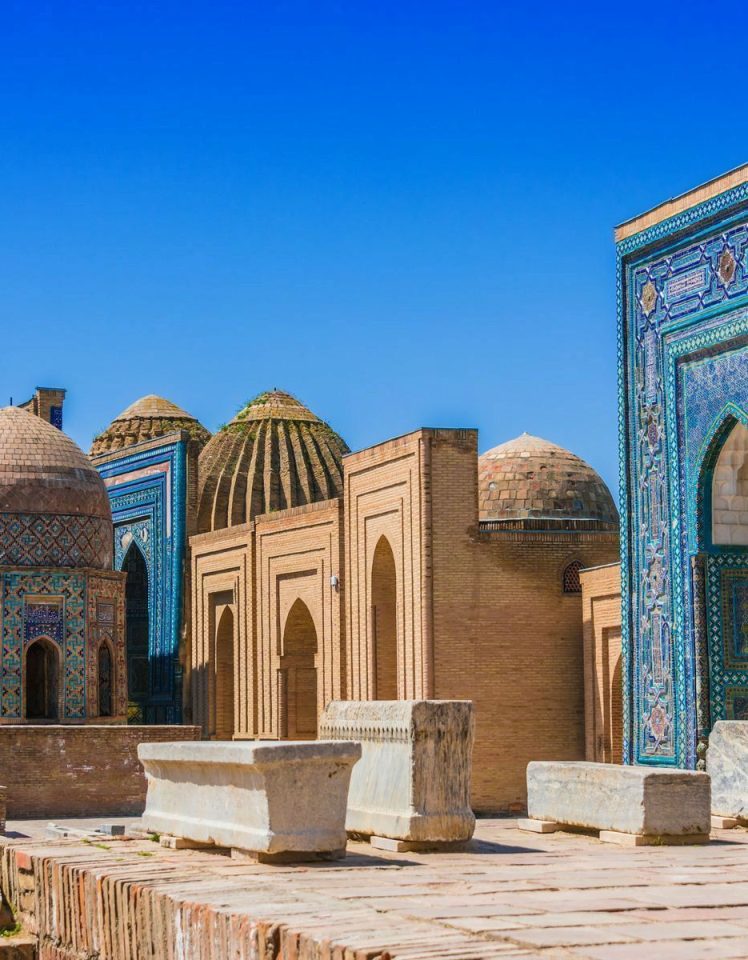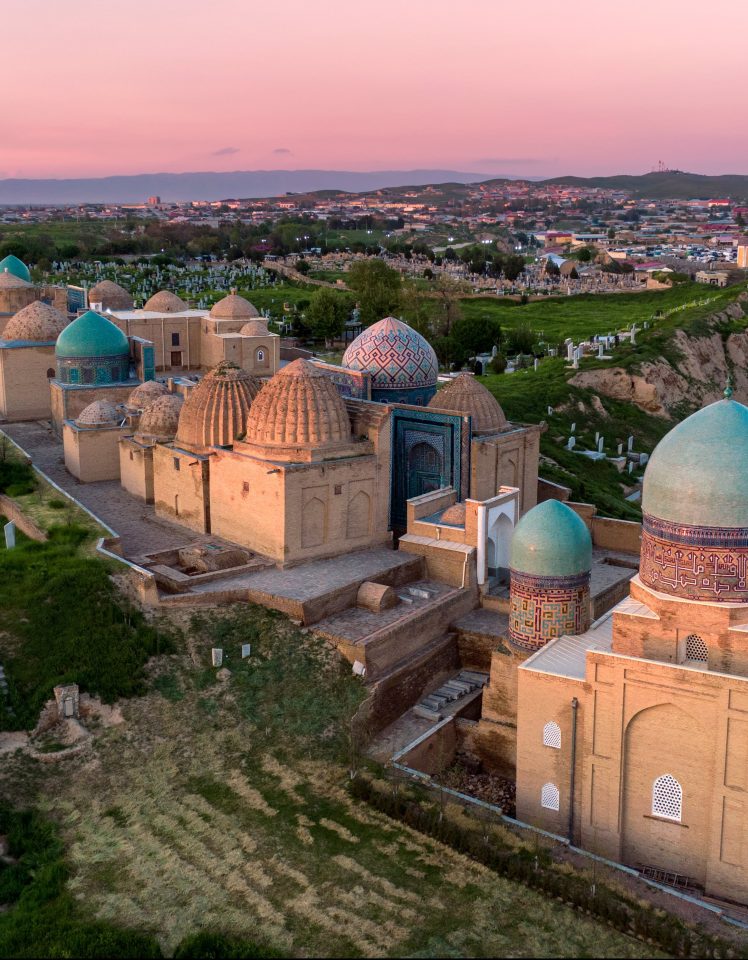In the historical and architectural heritage of Samarkand, alongside the Ulugh Beg Madrasah in Registan Square, one of the most picturesque monuments is the Shah-i-Zinda necropolis. Its history dates back to the 11th century when it was founded on the outskirts of Afrasiab, and its construction continued until the 15th century.
This necropolis acquired its name thanks to the legend of Qusam ibn Abbas, who, according to tradition, descended into deep underground wells to return on the appointed day after dying in battle. This event gave the place the name “Living King” — Shah-i-Zinda.
Originally, there were 14 mausoleums in the necropolis, with the tomb of Qusam ibn Abbas considered the oldest. However, the last structure, built in 1435 by Ulugh Beg, was the portal, which serves as the central entrance to the necropolis.
The proximity to Qusam’s mausoleum was considered a great honor for Muslims, and therefore, burial vaults were constructed nearby for the close relatives of Amir Timur. The tomb of his wife, located closest to Qusam, is adorned with intricate mosaic and exquisite paintings.
The entire Shah-i-Zinda necropolis impresses with its architecture, the beauty of its decorations, and numerous interesting facts. Visiting this historical site is worth including in your itinerary, especially if you are planning a jeep tour with the DWC tourist company and renting a jeep in Bishkek.
Access the Shah-i-Zinda Architectural Complex (clickable link).








